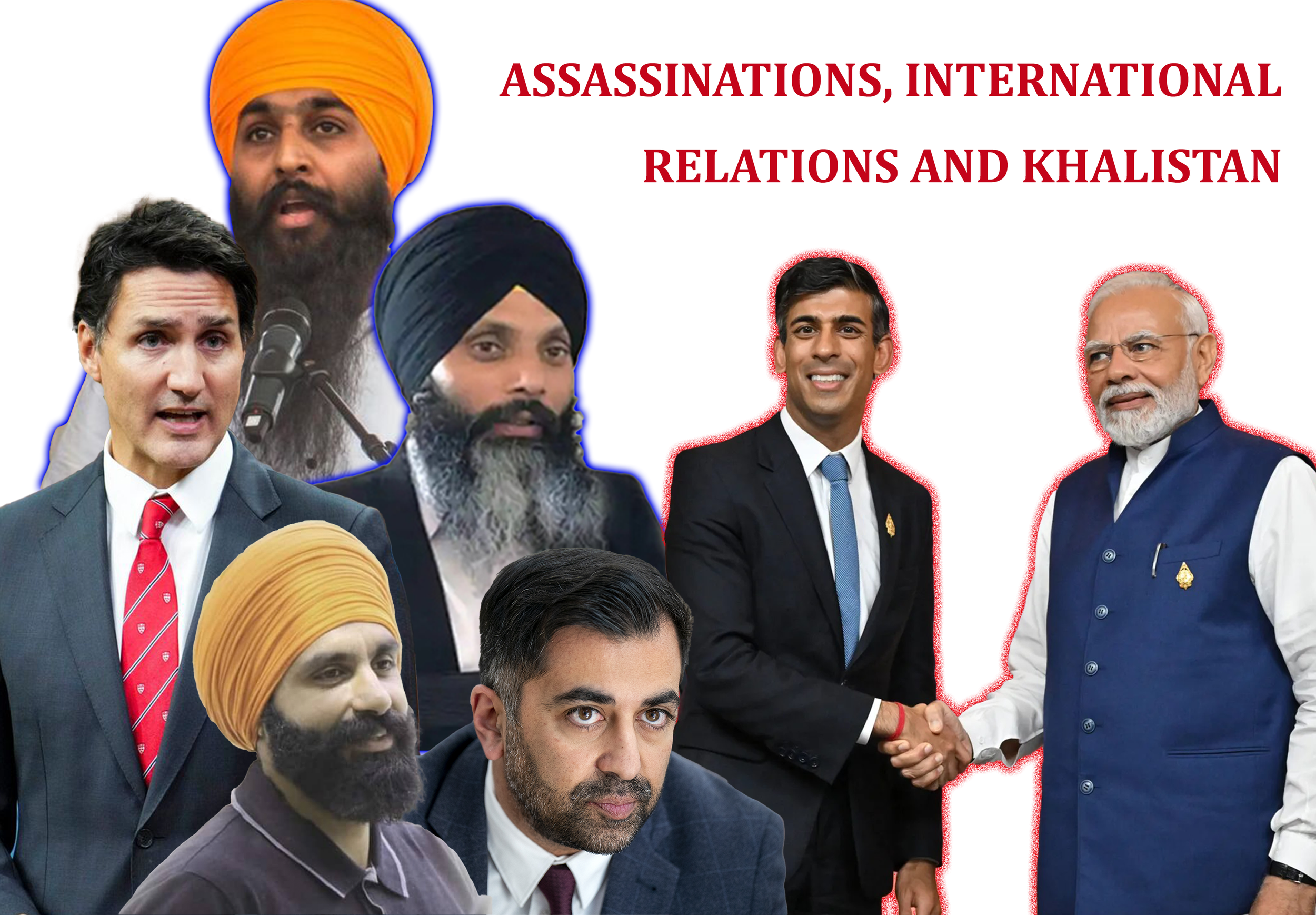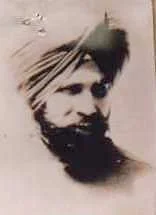Dogma of the Indian State
/On the 21st of July 2015 Manish Tewari, a lawyer and former Union minister from Panjab, published an article which appeared on the website of the Hindustan Times.
The article superbly illustrates the grotesque amount of propaganda that still continues to be churned out by the Indian State regarding Panjab and its recent history. Tewari starts with presenting an incomplete commentary of the green revolution. His opening sentence is constructed to create an image of 1960s Panjab that was moving in the right direction (due to the green revolution), followed swiftly with an inaccurate reference to the strategic division of Panjab in 1966.
Firstly, the green revolution created more problems than solutions for the people of Panjab as the introduction of chemical pesticides and genetically modified seeds gave rise to water scarcity, pests and diseases, spread of cancer and the inevitable occurrence of violence due to the socio-economic constraints on the people. Environmental activists have written extensively about the failures of the so called green revolution and the crippling affect it has had on Panjab.
Secondly Tewari states that the geographical reorganisation of Panjab came “as a reward for the gallant role played by the Punjab regiments and the people in containing and, repelling the Pakistani aggression in 1965.” This could not be further from the truth. In 1955 The States Reorganisation Commission (SRC) declared that all States in India be recognised on their linguistic majority. One year later the States Reorganisation Act (SRA) created 14 States based on this notion.
However, the SRC rejected the demand for a Panjabi-majority state, citing that Panjabi was not grammatically very distinct from Hindi and that there was a lack of support from the people. This was based on data collected under duress by Indian media outlets which pressured the Panjabi Hindus to declare Hindi as their mother tongue.
Naturally the people of Panjab were outraged at the rejection and sought to campaign for their rights under the SRA. Much like the campaigns against the suppressive colonial power post-1849 annexation, it was the Sikhs that spearheaded a decade long movement, this time for a Panjabi Suba in which tens of thousands of Panjabi people were arrested for peacefully protesting. In 1966 Panjab was finally recognised on linguistic grounds, however this only came after the Central Government divided the region into 3 pieces and carved Haryana and Himachal out of Panjab. The immediate result was that Panjab was reduced to a mere fraction of its size, river water was diverted and Chandigarh the capital was declared Union Territory; the control of which was held by the Central Government.
Tewari continues his diabolical analysis of post-partition Panjab by claiming that the Anandpur Sahib Resolution (ASR) paved the way for sectarian violence that “claimed more than 20,000 lives over the next two decades.” On the contrary, the ASR was a document that contained 12 Resolutions which outlined the religious, social, political and economic rights of the people of Panjab. The document actually served as a blueprint for other States in India to seek greater autonomy from Central Government, as implied in the Federal make-up of the Indian Constitution. Under ‘Economic Policy’, the document demanded the whole tax structure to be revised in such a way as to eradicate the evasion of taxes and the flow of black money. For agriculture the document sought to introduce land reform measures for improving agricultural production with a view to bridging the gap between the rich and the poor. Another demand was for all Panjabi speaking areas that fell to neighbouring States following 1966, to be returned to Panjab forming a single administrative unit. Thus Tewari conveniently omits to accurately explore the legitimate demands of the ASR.
Tewari then jumps straight to 1978, completely ignoring the events of 1975 in which Indira Gandhi was found guilty of election fraud by the High Court. The Supreme Court upheld the decision following an appeal and the Prime Minister was debarred from voting and politics for 6 years. However the very next day she introduced martial law by unilaterally declaring a state of emergency. The Press was censored and political opponents were imprisoned. Mass protests followed as the country fell to the inevitable brink of dissolution.
According to Amnesty International, 140,000 people were arrested without trial, and it is estimated that 40,000 were Sikhs. As in the 1950s, Sikhs spearheaded the protests against the fascist ways of the Indian State. Tewari however choses to present a different narrative, instead suggesting that “militancy followed in 1980 and thousands of political activists who opposed the fundamentalist and sectarian brand of politics or, for that matter, even mere bystanders were mowed down in cold blood by terrorists parading as religious zealots.” A stark contrast to the events on the ground which arose due to the oppressive style of governance adopted by Indira Gandhi with which she struck terror across the country.
In one paragraph Tewari instantly takes the legitimate demands and actions of the Sikhs to represent an act of terrorism carried out by a group of separatists; an approach often taken by other puppets of the Indian ventriloquist act. If Tewari had his way he would claim Guru Nanak to be a terrorist for it was he who first instilled the Sikhs with the spirit of standing up against oppression. In the 15th century he spoke against the barbarity of Babar’s actions and in the 20th century Guru Nanak’s disciples followed suit by highlighting the tyrannical ways of Indira Gandhi.
Sikhs from across Panjab voiced their discontent against the abhorrent ways of the Indian State. This defiance from the Sikhs, coupled with the legitimate demands of the ASR and the Civil Rights Movement that ensued in the early 1980s, were the reasons why the Indian Army was ordered to attack Darbar Sahib in June 1984. It was an attack to violently silence the Sikh voice once and for all.
The events of 1984 threw Panjab into Civil War, in which the Sikhs now only sought self-determination. Delhi witnessed the Sikh Genocide in the November of 1984 in which thousands of Sikhs were butchered, raped and killed on the streets of India. The years between 1984 and 1995 saw the inexplicable rise of enforced disappearances, fake police encounters and other extra-judicial killings across Panjab. According to Human Rights organisations an entire generation was wiped out.
Peace for the people of Panjab never returned as Tewari wrongfully suggests. Badal et al have merely regurgitated the policies initially intended by Delhi. The demands outlined in the ASR are yet to be fulfilled but remain as relevant today as they were 42 years ago.
The inhumane actions of the Indian Government crippled Panjab’s economy which has increased the levels of unemployment leading to social issues such as drugs addiction and soaring rates of alcohol consumption. These are the exact issues the ASR sought to remedy in the 1970s; one of the goals was to seek a ban on the sale of liquor and other intoxicants. The ASR also pressed for the prohibition on consumption of intoxicants and smoking in public places.
Furthermore rates of female infanticide have increased due to the introduction of illegal abortion clinics across Panjab and farmer suicides are common place due to the bleak financial outlook of the region. Sikh political prisoners remain behind bars even after having served their jail term. One generation was destroyed with bullets and a second has been swamped in a myriad of debt, intoxicants and state corruption. Punjab is in the clutches of totalitarianism and the Indian proxy war is thriving.









The UK government’s continued actions show that they are still trading bodies for gold. The Sikhs will continue to serve the Guru Panth, through their Dhan Man Thanh (body, mind, and wealth), and it is for Sikhs, and Sikhs alone, in the words of Shaheed Bhai Jaswant Singh Khalra, to decide “who is the terrorists and who is the righteous”.